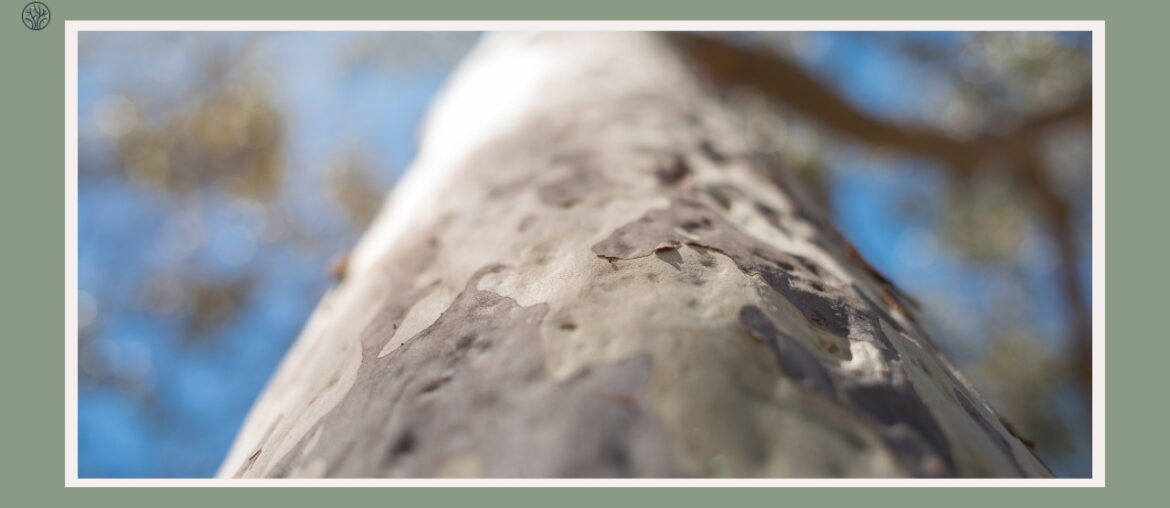Smooth gray bark, a part of tree trunk, is a rare and beautiful feature, giving trees a refined and mysterious appearance. It’s as if they were hiding secrets beneath their smooth surface. Each tree with smooth gray bark has its own unique story and identity.
In this guide, we’ll identify trees with smooth gray bark, such as birch, aspen, beech, and plane trees. We’ll learn how to recognize them and appreciate their distinctive qualities.
1. Birch Trees
- 1. Birch Trees
- 2. Aspen Trees
- 3. Beech Trees
- 4. Plane Trees
- 5. Paperbark Maple Trees
- 6. Japanese Stewartia Trees
- 7. Japanese Clethra Trees
- 8. Hornbeam Trees
- 9. Mexican Sycamore Trees
- 10. Smooth Bark Eucalyptus Trees
- 11. Desert Ironwood Trees
- 12. Ash Trees
- 13. Red Maple Trees
- 14. Sycamore Trees
- FAQs
- What is the name of a tree with smooth bark?
- What tree is native to temperate regions with smooth grayish bark?
- Are there any smooth bark tree in India?
- Small tree with smooth gray bark: Which is it?
- Tree with smooth gray bark in California: Identification and Features
- Large tree with smooth grey bark and glossy leaves: Identification
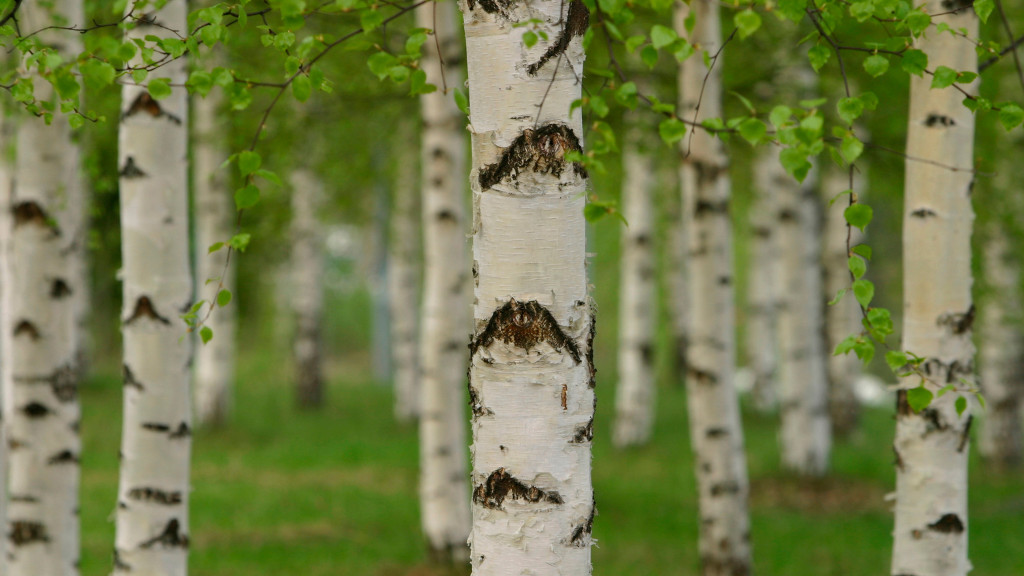
Birch trees, belonging to the Betula genus, are famous for their distinctive smooth bark that often captures the attention of nature enthusiasts and landscapers alike. These trees are a testament to nature’s ability to combine functionality with beauty.
Characteristics and Identification: Birch trees are deciduous, shedding their leaves annually. Their most distinguishing feature is their smooth bark, which can range from whitish and yellowish to greyish hues. This bark has a paper-like texture that naturally peels, a mechanism that helps the tree shed moss, lichen, and fungi that might grow on it.
Another unique characteristic of birch bark is the presence of dark horizontal streaks known as ‘lenticels’. These lenticels play a crucial role in facilitating gas exchange between the tree’s internal tissues and the external environment. Though not as distinctive as heart-shaped leaves, birch trees can still be identified by their leaves, which are either triangular or oval with a round base, pointed tips, and serrated margins. During autumn, these leaves transform into vibrant shades of yellow, orange, and red, adding to the tree’s visual appeal.
Habitat and Growth Zones: Native to temperate climates, birch trees predominantly thrive in the northernmost parts of North America. They prefer cool, moist environments and are often found in woodlands and along riverbanks. The growth zones for birch trees vary depending on the species, but most can be found in USDA hardiness zones 2 through 7. These trees have adapted to a range of soil types but prefer slightly acidic, well-draining soils. While they can tolerate periods of drought once established, young birch trees require consistent moisture for healthy growth.
2. Aspen Trees
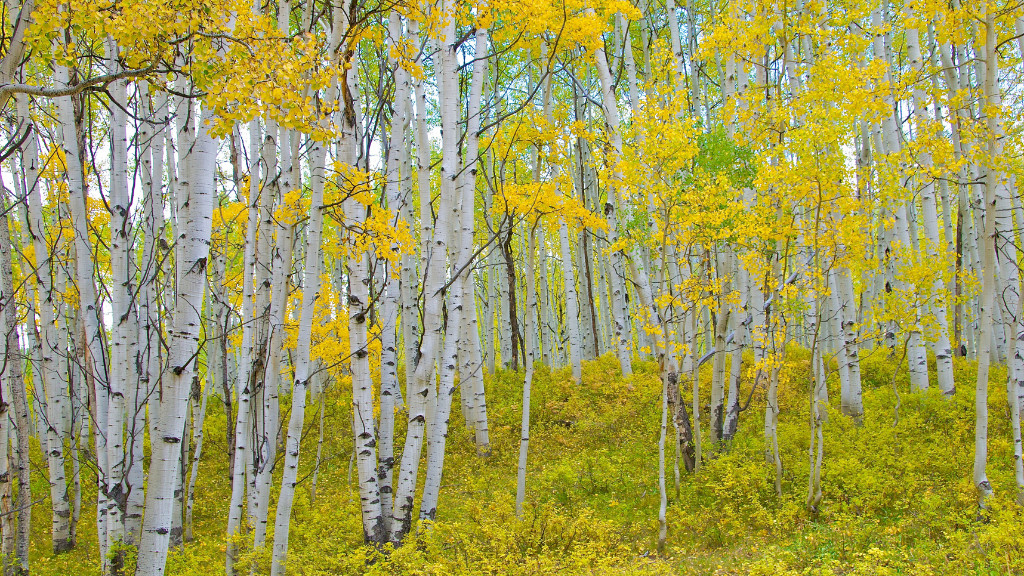
Aspens, with their slender trunks and fluttering leaves. Just like trees with pink leaves, these trees are a sight to behold when their leaves turn golden. These trees belong to the Populus genus and have unique bark and growth habits.
Distinctive Features: Aspen trees are characterized by their smooth bark that often has a greenish-white or yellowish-white hue in their younger years. As they mature, the bark takes on a silvery-white shade. Intriguingly, the greenish tint in the bark is due to the presence of chlorophyll, indicating that the bark is photosynthetic. This feature allows the tree to produce energy even before the leaves fully emerge in the spring.
Another notable characteristic of aspen bark is its appeal to various wildlife, from butterflies to larger animals like moose. As the aspen tree ages, its bark becomes slightly rough and does not peel as easily as birch bark. The leaves of the aspen are rounder and shorter than those of the birch and have a distinctive “quaking” movement in the breeze, leading to one of its common names, the “quaking aspen.”
Growth Habit and Zones: Aspen trees are native to regions with cold climates in the northern hemisphere. They typically grow between 20 to 80 feet tall and spread 20 to 30 feet wide. Aspens thrive in USDA hardiness zones 1 through 7. They prefer full sunlight and well-draining soil. One of the most fascinating aspects of aspens is their growth habit. They often propagate through root sprouts, leading to the creation of large groves of genetically identical trees. This clonal growth makes aspen groves one of the oldest and largest living organisms on Earth.
3. Beech Trees
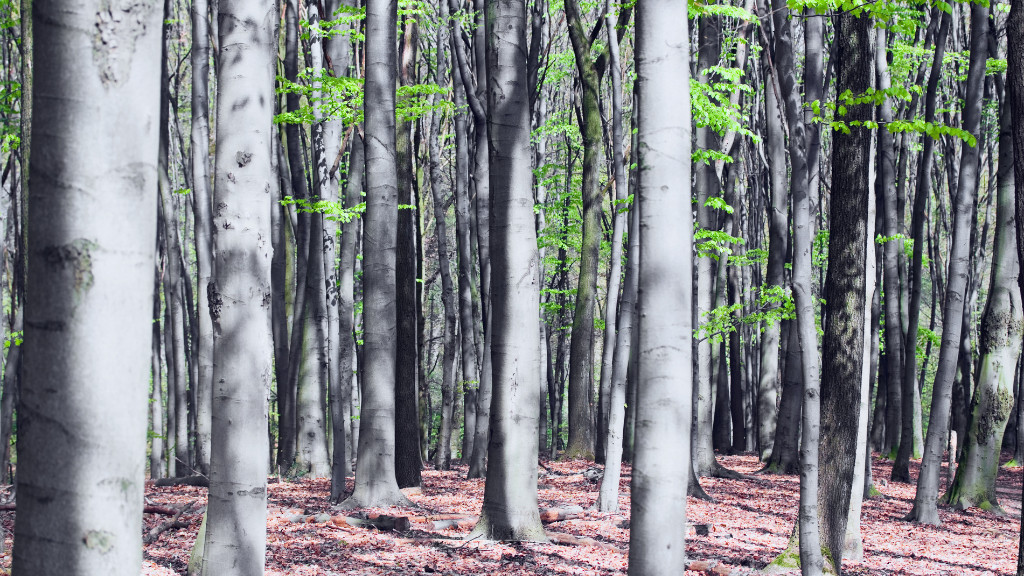
Beech trees, belonging to the Fagus genus, are majestic trees that have smooth gray bark and vibrant foliage. They are a popular choice for parks and large landscapes due to their grandeur and shade.
Bark Texture and Appearance: The bark of the beech tree is one of its most distinguishing features. It is smooth to the touch and has a light gray hue. Unlike many other trees, the bark remains relatively smooth even as the tree matures. This smooth texture often serves as a canvas in nature, with lichens and mosses occasionally adorning it. The bark’s consistent texture and color make it easily identifiable in forests, standing out among other trees with rougher or more textured barks.
Growth Habit and Foliage: Beech trees are native to temperate regions of North America, Europe, and Asia. They can grow impressively tall, ranging between 40 to 70 feet, with their crown spreading up to 40 feet in width. Beech trees thrive in USDA hardiness zones 4 through 9. They prefer well-draining soils and can tolerate various soil types, from sandy to clayey. The leaves of the beech tree are another point of admiration. They are alternately arranged on branches, elliptical in shape, with toothed margins and straight, parallel veins. In the fall, beech leaves turn a golden bronze, adding a touch of autumnal beauty to the landscape.
4. Plane Trees
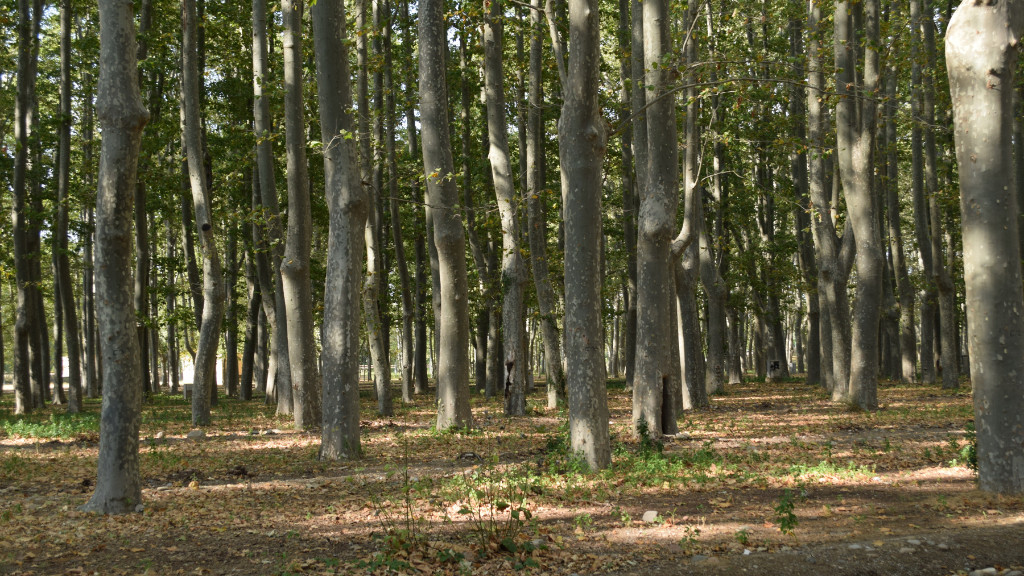
Plane trees, often recognized by their distinctive bark and large stature, belong to the Platanus genus. They are a common sight in many urban landscapes due to their resilience and shade-providing canopy.
Identifying Features: The most striking feature of plane trees is their peeling bark, revealing layers underneath. This gives the bark a unique ‘camouflage’ appearance with white, gray, brown, and tan patches. This characteristic is not just for show; as the tree grows and expands, the outer layers of the bark crack and peel off, making way for inner bark to grow. The leaves of plane trees are also distinctive. They are palmate and lobed, either three-lobed or five-lobed, with toothed edges along the margins. The leaves prominent veins on the lobes add to their unique appearance.
Common Habitats: Plane trees are native to various regions, including North America, Eastern Europe, and parts of Asia. They are highly adaptable and can thrive in a range of environments, from riverbanks to city streets. Plane trees prefer moist, well-draining soils and are often found lining streets, in parks, and along riverbanks due to their tolerance to pollution and ability to provide ample shade.
5. Paperbark Maple Trees
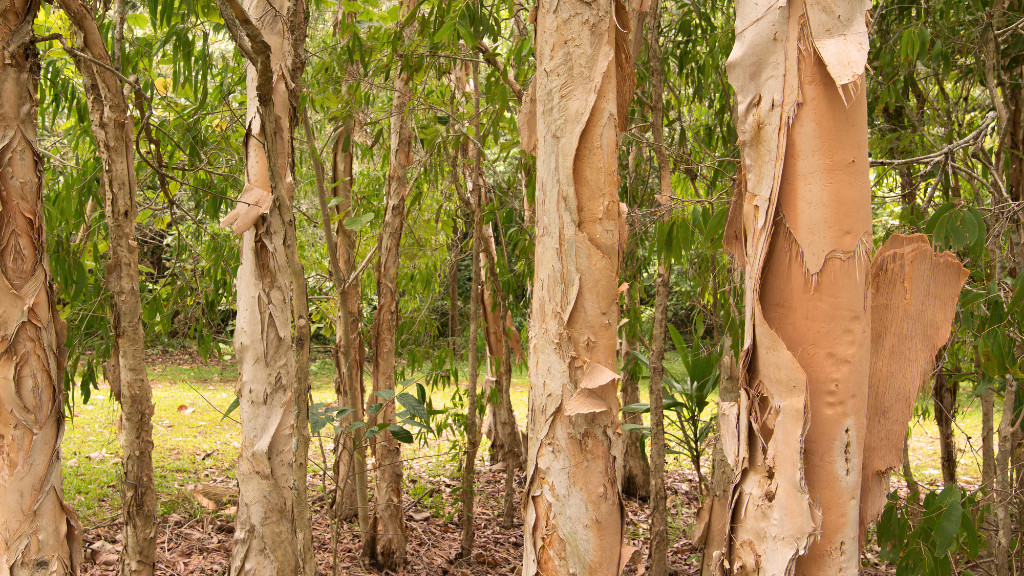
The Paperbark Maple, with its ornamental bark and vibrant fall colors, is a favorite among garden enthusiasts and landscapers. It belongs to the Acer genus and is famous for its unique bark and beautiful foliage.
Bark Peeling and Colors: The name “Paperbark” is derived from the tree’s distinctive bark, which peels away in thin, paper-like layers. This exfoliating bark reveals cinnamon-colored underlayers, adding multi-seasonal interest to the landscape. The contrast between the peeling reddish-brown outer bark and the smoother underbark creates a visually appealing texture, making it a focal point in gardens.
Growth Zones and Habit: Paperbark Maple trees are native to China but have gained popularity in gardens worldwide. They thrive in USDA hardiness zones 4 through 8. These trees are relatively small, typically growing to heights of 20 to 30 feet, making them suitable for smaller gardens or as understory trees in larger landscapes. They prefer slightly acidic, well-draining soils and benefit from mulching to retain soil moisture. In addition to their attractive bark, Paperbark Maples are also known for their three-lobed leaves that turn a brilliant red in the fall, adding to their ornamental value.
6. Japanese Stewartia Trees
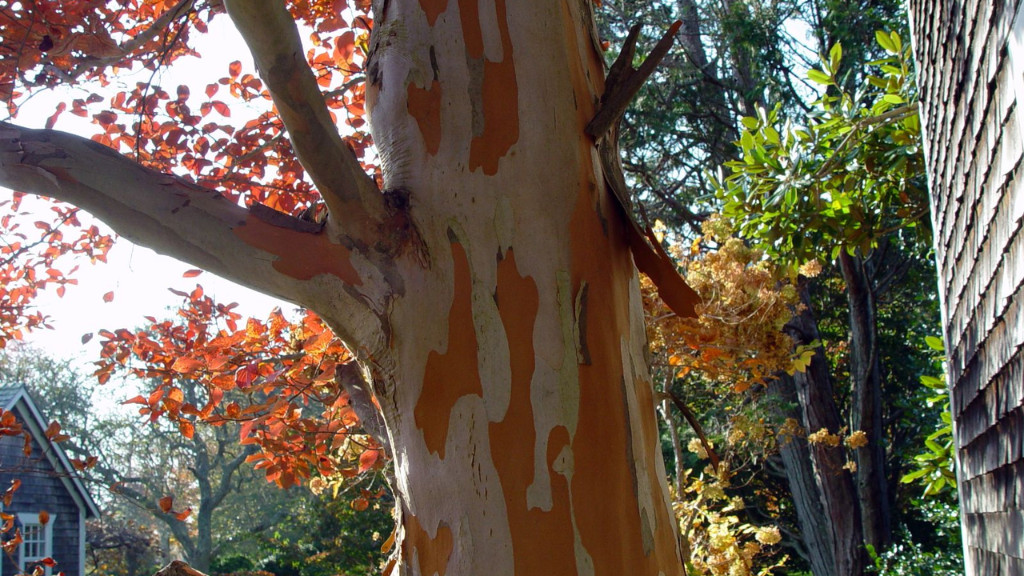
Japanese Stewartia, a member of the Theaceae family, is a tree that stands out not just for its flowers but also for its unique bark. Native to Japan, this deciduous tree is a gem in any garden setting.
Bark Exfoliation Patterns: One of the most captivating features of the Japanese Stewartia is its exfoliating bark. As the tree matures, the bark begins to peel away in patches, revealing a mosaic of colors underneath. This exfoliation results in a tapestry of gray, orange, and reddish-brown hues, creating a striking visual effect, especially during the winter months when the tree is devoid of leaves.
Growth Habit and Flowering: Japanese Stewartia typically grows to a height of 20 to 40 feet, with a similar spread, making it suitable for medium-sized gardens. It boasts a pyramidal to rounded crown, and its leaves turn a vibrant mix of red, orange, and purple in the fall. But it’s during the summer months that the tree truly shines. It produces camellia-like white flowers with orange-yellow centers, each bloom lasting for just a day but replaced by new ones over several weeks. These flowers not only add beauty but also attract pollinators to the garden.
7. Japanese Clethra Trees
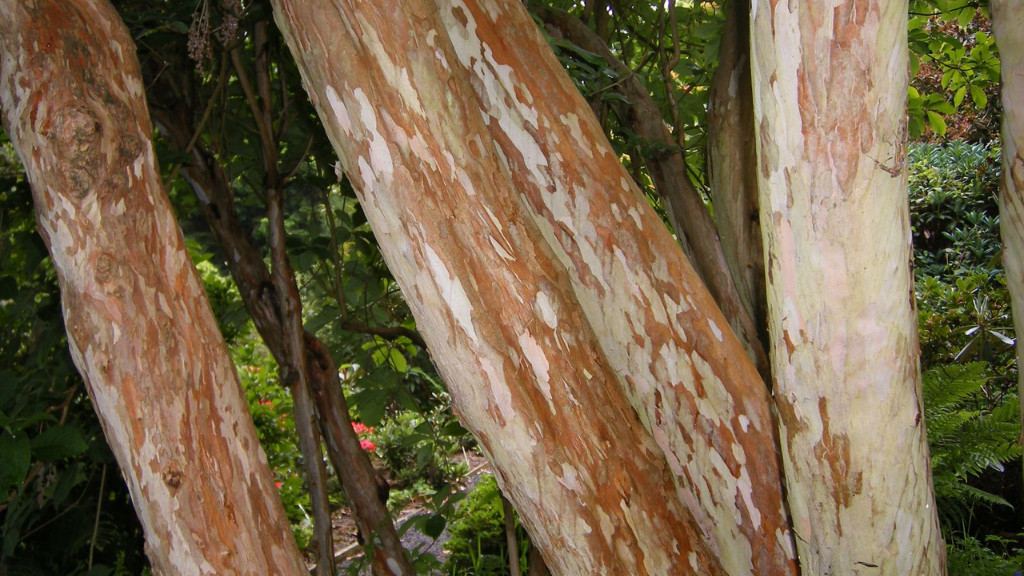
Japanese Clethra, also known as Alderleaf Clethra, is a lesser-known gem that deserves a spot in gardens, especially those with shaded areas. This tree is part of the Clethraceae family and is native to Japan.
Bark Texture and Colors: The bark of the Japanese Clethra is one of its standout features. It is smooth and light gray when young, but as the tree matures, the bark becomes deeply furrowed and takes on a darker hue. The contrast between the young and mature bark adds depth and texture to the landscape, making it a point of interest throughout the year.
Growth Zones and Habit: Japanese Clethra thrives in USDA hardiness zones 4 through 7. It is a small to medium-sized tree, typically reaching heights of 10 to 20 feet. Preferring partial to full shade, it’s an excellent choice for understory planting or shaded garden borders. The tree produces fragrant white flowers in slender, drooping racemes during the summer, which are a magnet for bees and butterflies. Its leaves are dark green, turning a golden yellow in the fall, adding another layer of seasonal interest.
8. Hornbeam Trees
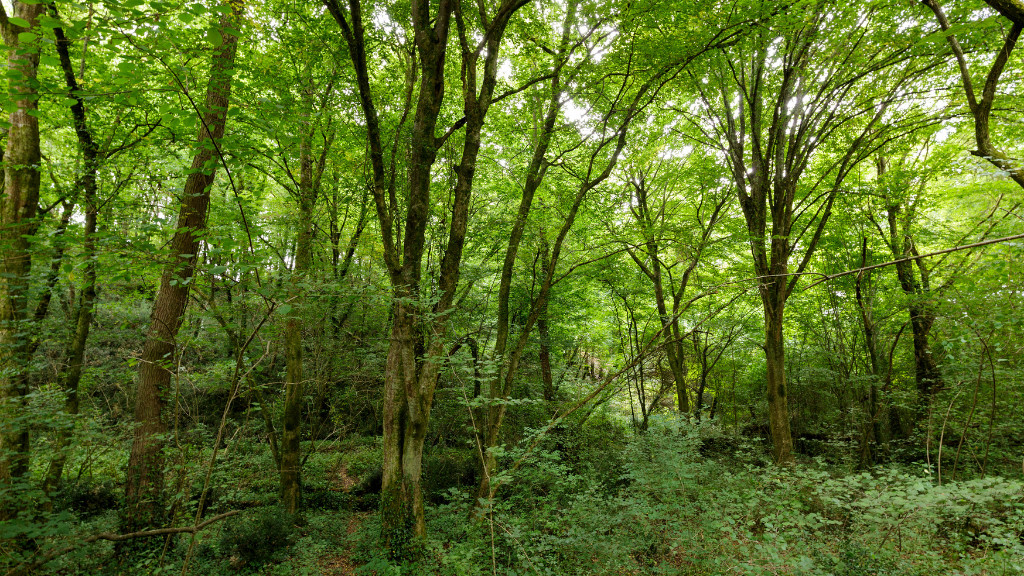
Hornbeam trees, belonging to the Carpinus genus, are often recognized for their hardwood and distinctive bark. These trees are versatile and can be found in various landscapes, from woodlands to urban settings.
Bark Development and Texture: Hornbeam trees have a unique bark that sets them apart from many other trees. In their younger years, the bark is smooth and has a rich gray color. As the tree matures, the bark retains its smoothness but develops a fluted or muscle-like appearance, often described as resembling flexed muscles. This characteristic has earned it the nickname “musclewood.” The unique texture not only adds visual interest but also makes it easily identifiable in forests and landscapes.
Growth Habit and Foliage: Hornbeams are medium-sized trees, typically growing to heights of 20 to 40 feet. They have a rounded crown and a dense branching habit, making them excellent choices for hedging or as a screen. Preferring full sun to partial shade, hornbeams are adaptable to a variety of soil types but thrive best in well-draining soils. The leaves of the hornbeam are elliptical with serrated margins. They are bright green during the growing season, turning to shades of yellow and orange in the fall, adding seasonal beauty to the landscape.
9. Mexican Sycamore Trees
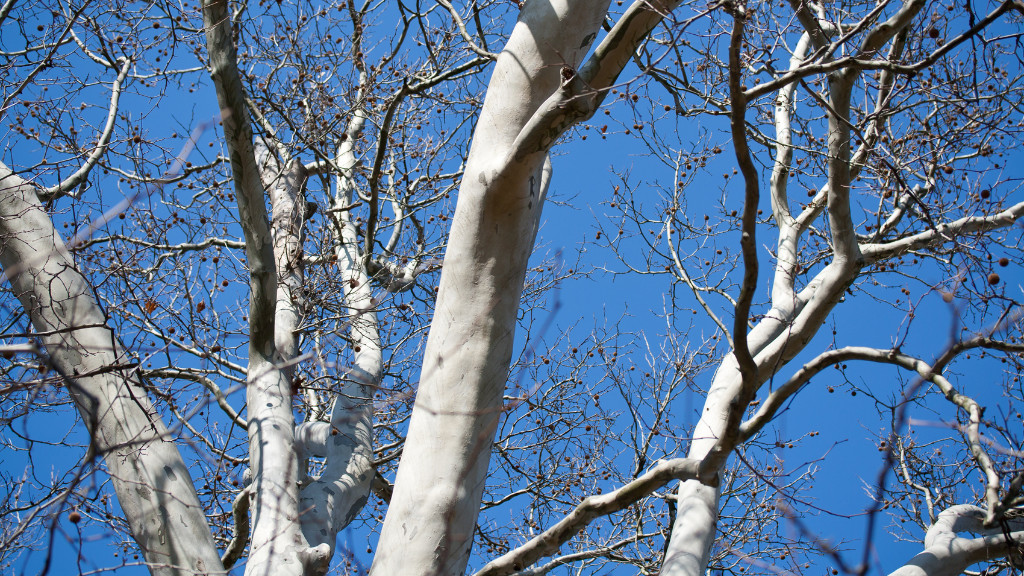
The Mexican Sycamore, a member of the Platanus genus, is a majestic tree that has a large stature and distinctive bark. Native to northeastern Mexico, this tree has become a favorite in many landscapes due to its adaptability and beauty.
Bark Peeling and Underlayer: One of the standout features of the Mexican Sycamore is its exfoliating bark. As the tree matures, the outer layers of the bark peel away, revealing a creamy white underlayer. This peeling characteristic gives the tree a mottled appearance, with patches of gray-brown bark interspersed with white areas. The contrast creates a visually appealing effect, especially when illuminated by sunlight.
Growth Habit and Foliage: Mexican Sycamores are fast-growing trees that can reach impressive heights of up to 80 feet. They have a broad, rounded crown, providing ample shade in hot climates. These trees thrive in USDA hardiness zones 7 through 10 and prefer moist, well-draining soils. They are drought-tolerant once established, making them suitable for regions with water restrictions. The leaves of the Mexican Sycamore are large, palmate, and lobed, with a deep green color on the top and a silvery-white underside. This contrast in leaf colors adds another layer of beauty to the tree, especially when rustled by the wind.
10. Smooth Bark Eucalyptus Trees
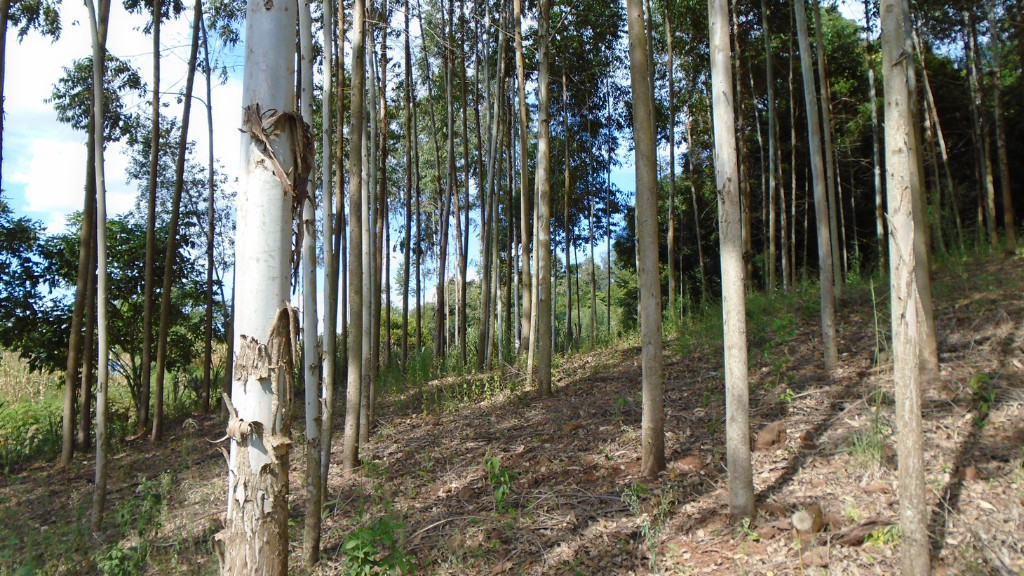
Eucalyptus trees, native to Australia but now found in various parts of the world, are known for their aromatic leaves and unique bark. The Smooth Bark Eucalyptus, in particular, stands out for its distinctive bark shedding patterns.
Bark Shedding and Colors: The Smooth Bark Eucalyptus’ name originates from its bark’s tendency to shed, revealing a smoother surface underneath. This shedding process is a natural adaptation that allows the tree to rid itself of moss, lichen, fungi, and parasites. As the outer layers peel away, they reveal a spectrum of colors, from pale cream to pink, and sometimes even a bluish or grayish hue. This ever-changing display of colors gives the tree a dynamic appearance, making it a focal point in landscapes.
Growth Zones and Habit: Eucalyptus trees thrive in warm climates and are typically found in USDA hardiness zones 8 through 11. They are fast-growing trees, with some species capable of reaching heights of over 200 feet. However, the Smooth Bark Eucalyptus usually ranges between 30 to 70 feet in height. These trees prefer full sun and can tolerate a variety of soil types, provided they are well-draining. While they can withstand occasional droughts, they thrive best with consistent moisture.
11. Desert Ironwood Trees

The Desert Ironwood, native to the deserts of the southwestern United States and northwestern Mexico, is a testament to nature’s ability to adapt and thrive in harsh conditions. Its name hints at its hard, dense wood, which is one of the heaviest in the world. Surprisingly, they don’t shed leaves so if you find a tree with no leaves, most of the time that means the tree is dead.
Bark Texture and Horns: The bark of the Desert Ironwood is rough and deeply furrowed, giving it a rugged appearance that reflects its tough desert environment. The tree’s branches often end in sharp thorns, a feature that not only deters herbivores but also provides shelter for birds and small animals, who nest among the thorny branches to protect themselves from predators.
Drought Resistance and Growth: True to its desert origins, the Desert Ironwood is highly drought-resistant. It has a deep root system that allows it to access water from far below the surface. This adaptation enables the tree to survive and even flourish in conditions where many other plants would perish. Typically growing to heights of 15 to 25 feet, the Desert Ironwood has a slow growth rate. It thrives in USDA hardiness zones 9 through 11. Beyond its resilience, the tree also has beautiful springtime blooms, with clusters of pink to lavender flowers adorning its branches.
12. Ash Trees
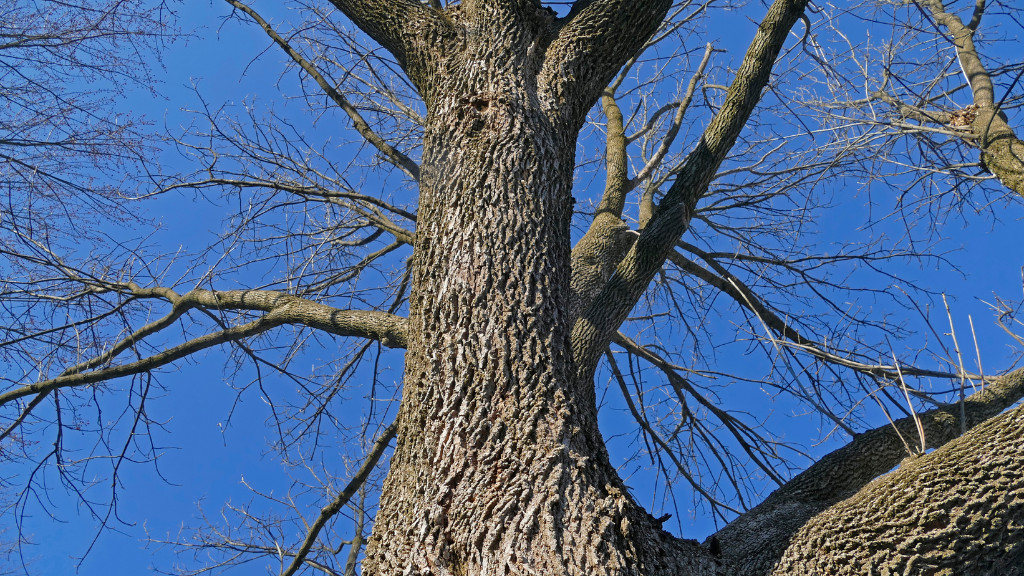
Ash trees, members of the Fraxinus genus, are versatile trees known for their strong wood and distinctive bark. They are commonly found in both urban and natural landscapes across the Northern Hemisphere.
Bark Development and Texture: In their younger years, ash trees have relatively smooth bark with a light gray hue. However, as they mature, the bark undergoes a transformation. It becomes deeply furrowed with a diamond-like pattern, creating ridges and valleys that give the tree a textured appearance. This diamond-patterned bark is one of the most distinguishing features of mature ash trees and makes them easily identifiable in forests and landscapes.
Growth Habit and Flowering: Ash trees are medium to large-sized trees, typically growing between 40 to 80 feet tall, though some species can reach even greater heights. They thrive in USDA hardiness zones 3 through 9 and prefer full sun to partial shade. Ash trees are dioecious, meaning individual trees are either male or female. Come spring, the trees produce small, inconspicuous flowers. While the male flowers produce pollen, the female flowers, once pollinated, give way to winged seeds known as samaras. These seeds play a crucial role in the tree’s propagation and are often carried away by the wind to new locations.
13. Red Maple Trees
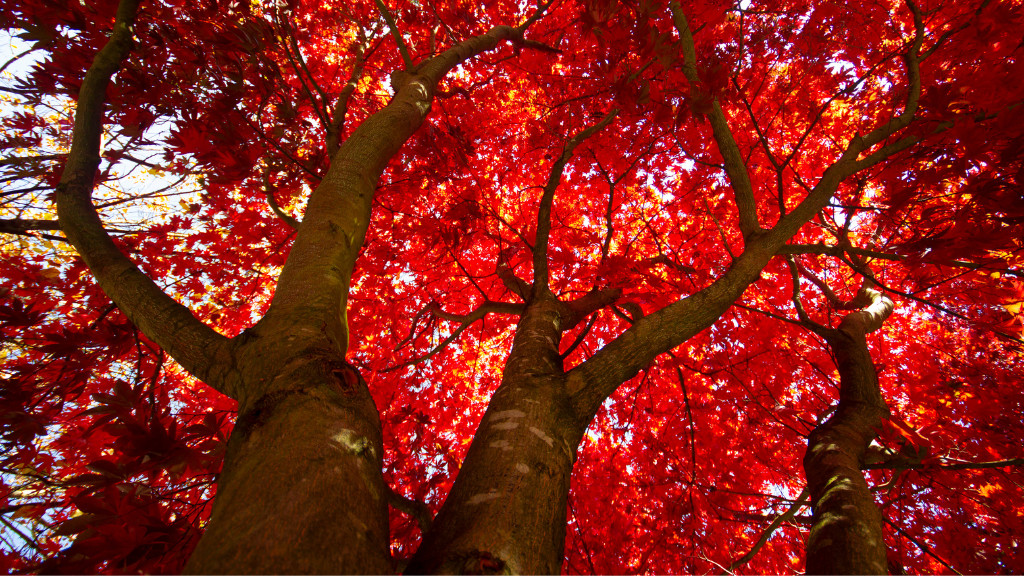
The Red Maple, scientifically known as Acer rubrum, is a beloved tree in many landscapes, especially for its vibrant fall colors. It’s a testament to nature’s ability to paint landscapes with brilliant hues.
Bark Texture and Flakes: Young Red Maple trees have smooth, light gray bark. As the tree matures, the bark becomes darker and begins to develop vertical cracks. Over time, these cracks deepen, and the bark starts to flake off in thin, scaly plates. This flaky texture, combined with the tree’s brilliant foliage, makes it a standout in any landscape.
Growth Habit and Foliage: Red Maples are fast-growing trees that can reach heights of 40 to 70 feet, with a spread of 30 to 50 feet. They are adaptable to a range of soil types and moisture levels, making them a popular choice for various landscapes. They thrive in USDA hardiness zones 3 through 9. The tree’s leaves are its crowning glory. They are typically 3 to 5 lobed with serrated margins. While they are green during the growing season, come fall, they transform into brilliant shades of red, orange, and sometimes even purple. This vibrant fall display has earned the tree its common name and makes it a favorite among those seeking to add autumnal beauty to their landscapes.
14. Sycamore Trees
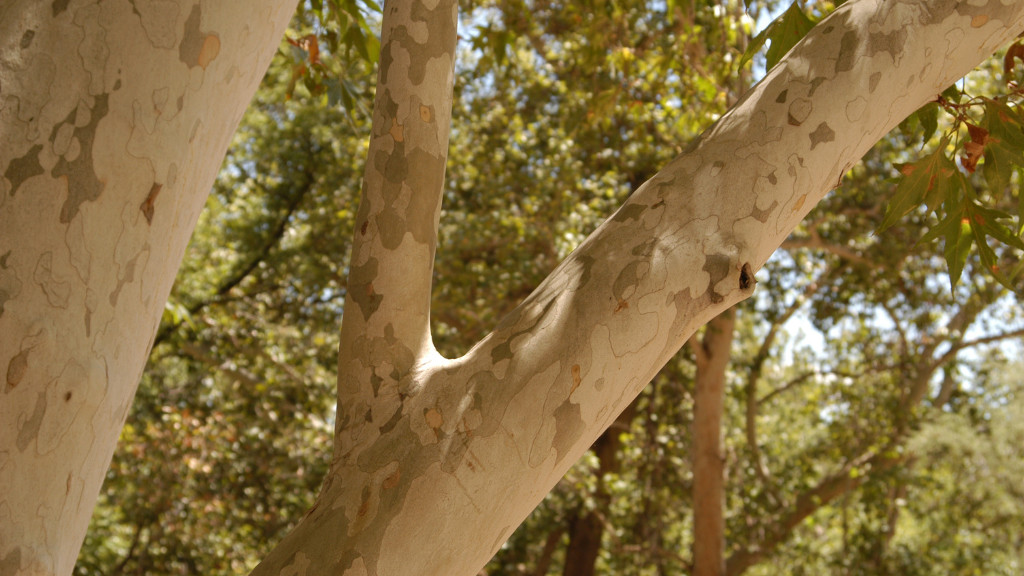
Sycamore trees, often associated with the Platanus genus, are large, robust trees known for their distinctive bark and broad leaves. They are commonly found lining city streets and in spacious parks due to their shade-providing canopy.
Identifying Features: The most recognizable feature of sycamore trees is their bark. In younger trees, the bark is smooth and pale gray. However, as the tree matures, the outer layers of the bark begin to peel away, revealing a creamy white or tan underlayer. This exfoliating characteristic gives the tree a mottled appearance, with patches of darker and lighter bark intermingling. The leaves of the sycamore are broad, lobed, and have a somewhat rough texture. They are typically bright green in color, turning a yellowish-brown in the fall.
Common Habitats: Sycamore trees are native to various parts of the world, including North America, Europe, and Asia. They are highly adaptable and can thrive in a range of environments. While they prefer moist, well-draining soils, they are also tolerant of urban pollution, making them a popular choice for city landscapes. Sycamores are often found along riverbanks, floodplains, and in lowland areas where they have access to ample water.
FAQs
Let’s dig a little deeper into the world of trees with smooth bark.
What is the name of a tree with smooth bark?
There are several trees with smooth bark, including the Birch, Aspen, and Beech trees. The specific tree would depend on the region and other identifying features.
What tree is native to temperate regions with smooth grayish bark?
The Beech tree is native to temperate regions and has smooth, grayish bark.
Are there any smooth bark tree in India?
In India, the Arjuna tree (Terminalia arjuna) is known for its smooth, whitish-gray bark that peels off in thin layers.
Small tree with smooth gray bark: Which is it?
The Paperbark Maple is a smaller tree known for its smooth bark that peels away in thin, paper-like layers, revealing a cinnamon-colored underlayer.
Tree with smooth gray bark in California: Identification and Features
The Madrone tree, native to California, is known for its smooth, reddish brown bark that peels away to reveal a lighter underlayer.
Large tree with smooth grey bark and glossy leaves: Identification
The Southern Magnolia is a large tree with smooth gray bark and large, glossy green leaves. It’s also known for its large, fragrant white flowers.

